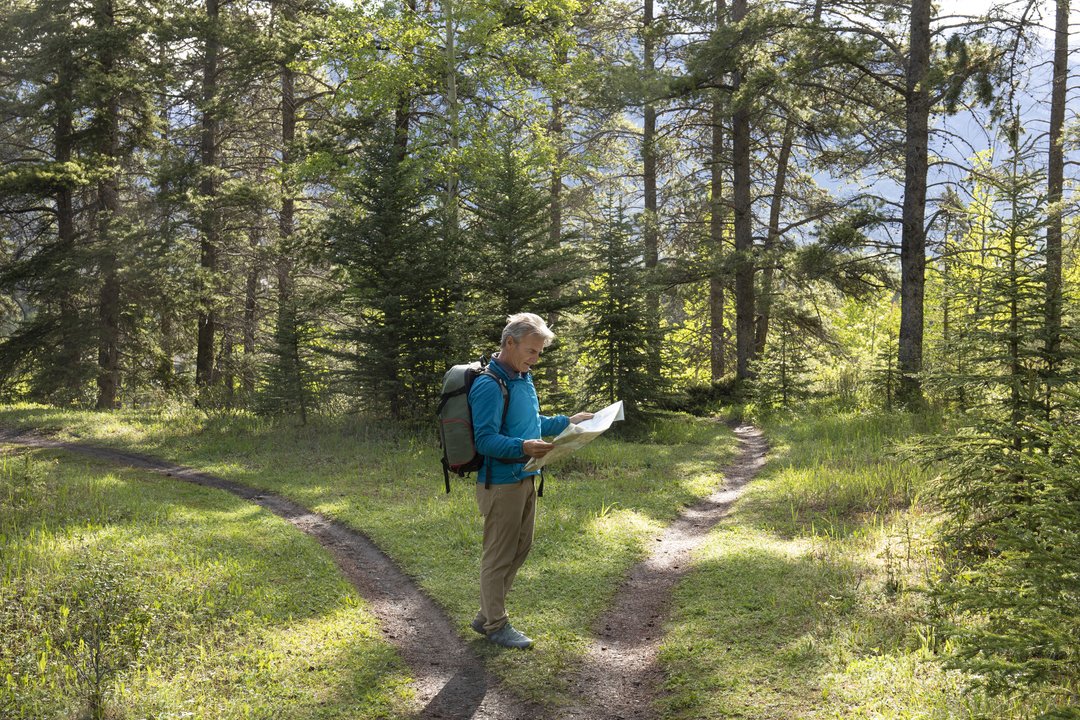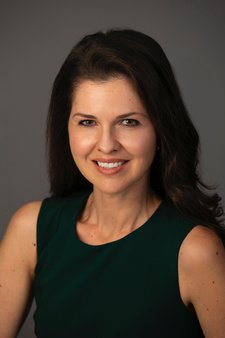
ENUMA OKORO
May 11, 2023
How do we respond when our routines and pathways are disrupted?

The other day I was getting ready to travel and rummaging through a drawer looking for an old leather wallet in which I used to carry my travel documents. When I found it, there was a worn foldable street map of Paris, at least a decade old, tucked into one of the sleeves.
I haven’t used a proper street map in years. But there was a time in my life when you couldn’t find me without some sort of map in my bag or pocket. Before the crazy advance of smartphones, I relied on them to make my way through cities as I drove or walked — though I wasn’t always good at reading them. I have a hard time figuring out what on the map directly correlates to what I am experiencing in real life.
But I have always been fascinated by the idea of maps, that you could chart a course through some part of your life, trusting that you would be correctly guided by someone else’s research, findings and renderings. All maps aim towards the goal of charting a narrative about what exists, what perspective is central, what can be trusted, and what is of value for our attention.
Johannes Vermeer used maps in many of his arresting paintings; in the 17th century, they were a common motif in both Dutch paintings and in Dutch interiors as decorative features. In the 1663 painting “Woman Reading a Letter”, a large portion of a map (based on a real 1620s map by Balthasar Florisz van Berckenrode) serves as the backdrop of the scene.
A young woman, dressed in a billowy cornflower-blue smock and a full taupe skirt, stands at the edge of a table peering down at a letter gripped in her hands. Morning light pours in from the unseen window. The muted palette of creams, blues, dark brown and black gives the painting an intimate, soft and enclosed mood.
Her body, positioned in the centre of the frame, forms a triangular shape that directs our attention both to her and the map on the wall behind. Her head, coloured similarly to the map, almost blends into it. And the bottom boundary of the map falls directly at her heart line. We are being directed to the world within her, where her attention is riveted by what she reads in the letter.
The map in this painting feels symbolic of the relationship between what is happening in the exterior world — the world of the letter and its sender — and the interiority of the woman’s world: what the letter makes her feel and think and desire. Where would those feelings, thoughts and desires take her if she could move about as freely as she wanted, beyond this room, beyond the house, beyond the social expectations and limitations of the time?
It makes me wonder what might be more apparent to us and to others if we created maps that charted our lives across a season of a year. The places we go to, or don’t go to, and the frequency of these movements would say much about the things and people that are important to our lives, and also about what we are bound to, whether willingly or not. The places in which we find ourselves can speak to the things that limit us as well as those that give us a sense of freedom, agency and expansion.
I love the way that Madagascar-born artist Malala Andrialavidrazana recreates maps to challenge and stimulate thinking about the representation of systems of knowledge, narratives and perspectives. The complex and layered 2018 work “Figures 1852, River Systems of the World” is part of a series she began in 2015, and is currently on view at the exhibition Indigo Waves and Other Stories at the Gropius Bau in Berlin.
In it, a map of the world is overlaid with images of people, cultures, modes of production and ways of living. Just off-centre is an indigo-coloured woman at the helm of a boat; beside her drawings of first-nation people, groups dressed in western clothing, armies, irrigation systems and caricature figures working farmland.
Fascinated by 19th-century maps and the history of western exploration and nation-building, in this series Andrialavidrazana has combed through archives to find photographs, drawings from history and science books, etchings, texts, postage stamps, bank currencies and other ephemera, which she draws together in large-scale collaged work that illustrates how different cultural narratives have been excluded from mainstream systems of power and privilege. Her art imagines how different representations of history and place can exist simultaneously and non-hierarchically, in contrast to the cartographers of the 19th century who were committed to global expansion of western ideals and power.
Andrialavidrazana’s work reminds us that we live within and according to embedded systems of knowledge that are rarely questioned or reconsidered as simply one of many. Maps hold stories about where power lies and inherent in the history of mapmaking are narratives about how we are supposed to live collectively.
It makes me think about the maps we carry of family, culture and nation. As an Igbo woman from Nigeria, I was raised with set narratives about many things, from the role of women and men to the value of elders and the importance of work, knowledge and the intellect. I was also raised with narratives particular to the experiences of my own family. All these things are a type of mapmaking: set routes I was meant to follow in constructing a life of my own, without questions or even awareness. We all have our versions of this. But Andrialavidrazana’s work reminds me that maps, even our personal ones, can be reconfigured to align better with our own experience and ways of being, with a little work and awareness. We get to rethink who the map-makers are in our lives.
The 1963 MC Escher woodcut print “Möbius strip II” may seem an odd image to include about maps and how we orient our lives. But I was struck by what this image suggests about how we find our way in the world.
Nine red ants are travelling in an endless loop around an olive-green Möbius strip. Ants are fascinating creatures. They have a type of internal mapping system that uses what scientists call idiothetic cues (self-movement cues) to help them to find their way back to their nests or colonies. But a Möbius strip is a surface that loops through itself and has no boundaries. It is an unorientable surface, with no distinguishable beginning or end point.
There are times in our lives when none of the maps we use to find our way seem to work. Our routines, our almost automated ways of navigating the world, are chaotically disrupted because something changes. Maybe we move, maybe we fall sick, maybe we leave a marriage, maybe there’s a global pandemic, maybe there’s a financial crisis. Whatever it is, for a period of time there seems to be no navigable way around it.
We will all find ourselves in that position at some point in our lives. And that’s worth remembering. But also worth remembering is that we are often more resilient than we give ourselves credit for and sometimes it takes a seemingly unorientable experience to stretch us into new routines and way-making for ourselves. This kind of remapping requires remembering that our bodies as well as our minds have knowledge for us.
When the usual landmarks in our lives are lost, we have to find new ways of navigating. Paying attention to what we sense and feel, honouring and trusting our needs and intuition, can be a powerful start to finding our way back to ourselves. All maps can be redrawn.
Copyright The Financial Times Limited 2024
© 2024 The Financial Times Ltd. All rights reserved. Please do not copy and paste FT articles and redistribute by email or post to the web.
This article was legally licensed by AdvisorStream








